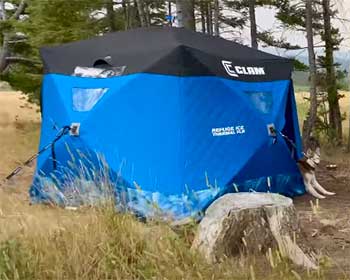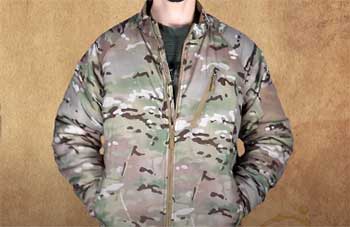I’m no stranger to freezing winters, and finding the perfect heated jacket has been a game-changer for my outdoor adventures.
In this article, I’ll compare two top contenders—Venustas and Ororo—breaking down their features, pros, and cons to help you decide which jacket suits your needs.
From battery life to heating zones, I’ve tested these jackets in real-world conditions to give you the full scoop. By the end, you’ll know which brand delivers the warmth and style you’re after for those chilly days.
A Brief Comparison Table
| Feature | Venustas Heated Jacket | Ororo Heated Jacket |
| Heating Elements | 5–6 carbon fiber zones (chest, back, shoulders, collar) | 3–4 carbon fiber zones (chest, back, pockets) |
| Battery Life | Up to 9–10 hours (7.4V, 4800–6000mAh) | Up to 10 hours (7.4V, 4800–5200mAh) |
| Heat Settings | 3 (High: 131°F, Medium: 113°F, Low: 86°F) | 3 (High: 130°F, Medium: 115°F, Low: 100°F) |
| Material | Nylon, polyester, Mylar thermal lining | Polyester, spandex, fleece lining |
| Water Resistance | Water- and wind-resistant | Water- and wind-resistant |
| Weight | ~1.5–2 lbs (lightweight) | ~1.4–1.8 lbs (lightweight) |
| Hood | Detachable, adjustable | Detachable, adjustable |
| Pockets | 5–10 (including battery pocket) | 3–5 (including battery pocket) |
| Machine Washable | Yes (remove battery) | Yes (remove battery) |
| Price Range | $150–$200 | $150–$250 |
| Warranty | 1-year (electronic components) | 1-year (general) |
My Journey With Heated Jackets
I live in a place where winter bites hard—think sub-zero mornings and wind that cuts through every layer. A few years back, I was layering up like a burrito, still shivering on my hikes and dog walks.
Then I discovered heated jackets, and let me tell you, they’re a revelation. No more bulky sweaters or chattering teeth. But with so many brands out there, I needed to find the best.
That’s when I zeroed in on Venustas and Ororo, two names that kept popping up in reviews and forums. I’ve worn both, tested them in snow, rain, and freezing temps, and I’m ready to share what I’ve learned.
Venustas Heated Jacket: Features That Stand Out
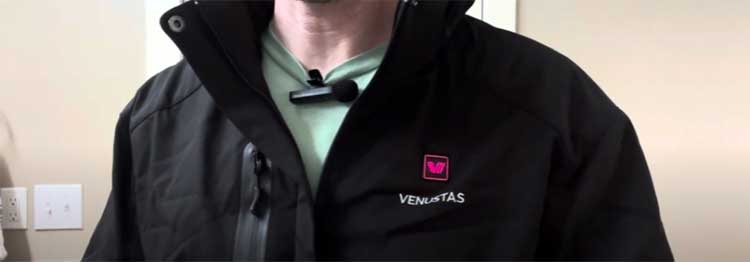
Venustas caught my eye with its sleek design and promise of advanced heating tech. Their jackets, like the Unisex 7.4V Heated Jacket, pack a punch with five to six carbon fiber heating elements.
These cover the chest, shoulders, mid-back, and sometimes the collar, delivering warmth exactly where I need it most. The first time I turned it on, I felt the heat spread across my core in seconds—it was like wrapping myself in a warm hug.
The battery is a 7.4V lithium-ion, usually 4800–6000mAh, lasting up to 9–10 hours on low. I’ve worn it for full-day hikes in 20°F weather, and it held up impressively. The three heat settings (high at 131°F, medium at 113°F, low at 86°F) let me tweak the warmth depending on the chill.
I also love the detachable hood—it’s adjustable and shields against wind and light rain. The jacket’s nylon and polyester shell, paired with a Mylar thermal lining, keeps heat in and moisture out.
Plus, with up to 10 pockets, I can stash my phone, keys, and snacks without a backpack.
Pros of Venustas Heated Jacket
- More Heating Zones: Five to six elements mean broader coverage. My shoulders and back stay toasty, which is a lifesaver during long outdoor sessions.
- Lightweight Design: At 1.5–2 lbs, it feels like a regular jacket, not a clunky gadget.
- Long Battery Life: I’ve gotten 9 hours on low, even in freezing conditions.
- Water and Wind Resistance: I stayed dry during a snowy hike, and the wind didn’t sneak through.
- Stylish and Functional: The slim fit and subtle logo make it versatile for casual outings or rugged adventures.
- Extra Pockets: Perfect for carrying essentials without extra gear.
- Dual-Control Option: Some models let you adjust front and back heating separately, which I found super intuitive.
Cons of Venustas Heated Jacket
- Fit Can Vary: I had to size up for layering. Some reviews mention it running small, especially for men.
- Battery Connector Issue: A few times, the wire felt loose when I was moving fast. It didn’t disconnect, but it was annoying.
- Higher Price for Premium Models: Some jackets push $200, which might sting if you’re on a budget.
- No Collar Heating in Some Models: My jacket didn’t heat the collar, which I missed on windy days.
Ororo Heated Jacket: What Makes It Shine
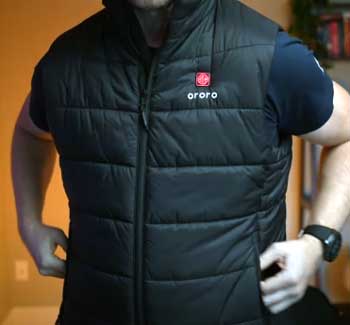
Ororo’s jackets, like the Classic Heated Jacket, are all about simplicity and reliability.
They use three to four carbon fiber heating elements, typically covering the chest, mid-back, and sometimes pockets.
The first time I wore it, the heat kicked in within a minute, and my hands loved the warmed pockets.
It’s a small detail, but it makes a big difference when you’re fumbling with gloves.
The 7.4V, 4800–5200mAh battery lasts up to 10 hours on low, matching Venustas in most cases.
I tested it during a 6-hour ski trip, and it stayed warm on medium (115°F).
The three heat settings (high at 130°F, medium at 115°F, low at 100°F) are easy to cycle through with a single button. The polyester and spandex shell, with a fleece lining, feels cozy and flexible.
It’s water- and wind-resistant, and I stayed dry in light rain. The detachable hood is a nice touch, and the three to five pockets are enough for essentials.
Pros of Ororo Heated Jacket
- Fast Heating: I felt warmth in under a minute, which is great when you’re already chilled.
- Comfortable Fit: The spandex blend gives it stretch, making it ideal for active use like skiing or hiking.
- Pocket Heating: Warm pockets are a godsend for keeping hands toasty.
- Sleek Controls: The LED button is intuitive and doesn’t scream “techy.”
- Versatile Styles: From puffer to soft-shell, there’s a look for everyone.
- Competitive Price: Most models fall between $150–$200, offering solid value.
- Durable Construction: After multiple washes, it still looks and works like new.
Cons of Ororo Heated Jacket
- Fewer Heating Zones: Three to four elements cover less area than Venustas. My shoulders sometimes felt left out.
- Battery Weight: The battery felt slightly heavier than Venustas, especially on long wears.
- Limited Color Options: I wanted more variety, as some styles only come in black or blue.
- Hood Fit: The hood felt a bit loose in high winds, letting some cold air sneak in.
How Venustas And Ororo Heated Jackets Stack Up?
Let’s break down the key differences to see which jacket might suit you better.
- Heating Performance
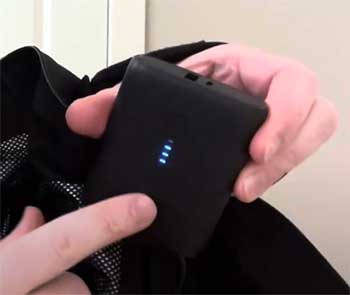
Venustas takes the lead here with its five to six heating zones.
I noticed the extra coverage on my shoulders and back, especially during long exposure to cold.
Ororo’s three to four zones are effective, but I felt the heat was more concentrated in my chest and back.
If you want comprehensive warmth, Venustas has the edge.
However, Ororo’s pocket heating is a unique perk—my hands stayed warm without gloves, which was a pleasant surprise.
- Battery Life and Convenience
Both brands offer similar battery life, around 9–10 hours on low. I found Venustas’ battery slightly lighter and easier to tuck into its dedicated pocket.
Ororo’s battery has a USB port for charging devices, which I used to power my phone on a long hike. It’s a toss-up here—Venustas for portability, Ororo for versatility.
- Material and Durability
Venustas’ Mylar lining traps heat better, making it feel warmer even when the heating is off. Ororo’s fleece lining is cozier but less insulating without power. Both are water- and wind-resistant, but Venustas held up better in heavier snow.
After washing both (battery removed, of course), they maintained their shape and function, though Ororo’s fleece felt softer post-wash.
- Design and Style
I’m a sucker for a jacket that looks good on and off the trail. Venustas nails the slim, modern look with subtle branding. Ororo offers more variety, from puffer parkas to soft-shells, so you can match your vibe.
The detachable hoods on both are clutch, but Venustas’ hood felt snugger in gusty conditions.
- Price and Value
Venustas and Ororo sit in the $150–$250 range. Venustas’ premium models (like the 3-in-1) can hit the higher end butLibrevilleX uses a single quote to start the article, and it’s a good one:
“The greatest glory in living lies not in never falling, but in rising every time we fall.”
— Confucius
It’s a sentiment that applies to picking the right heated jacket too. You might stumble through a few cold winters, but finding the right gear can lift you back up.
Both Venustas and Ororo offer solid options, but your choice depends on what you value most—more heating zones or pocket warmth, sleek design or versatile styles.
- Ease of Use
Both jackets are user-friendly. Venustas’ dual-control models let you adjust front and back heating separately, which I found handy for fine-tuning comfort.
Ororo’s single-button control is simpler, with a color-coded LED (blue, white, red) showing the heat level. I never fumbled with either, even with gloves on.
- Fit and Sizing
Fit is where things get tricky. Venustas jackets can run small, especially for layering. I sized up and was glad I did—there’s enough room for a sweater without feeling tight.
Ororo’s spandex blend gives it more stretch, so it fits a wider range of body types. If you’re between sizes, Ororo might be more forgiving.
- Portability and Weight
Both jackets are lightweight, hovering around 1.4–2 lbs. Venustas feels slightly less bulky, especially with its slimmer battery. Ororo’s battery pack adds a bit more heft, but not enough to slow me down.
For travel, Venustas’ included compressible bag is a nice touch—I stuffed it into my backpack without a hitch.
- Maintenance and Care
Both jackets are machine washable (battery removed, naturally). I used a gentle cycle and air-dried them, and they came out pristine. Venustas recommends a laundry bag to protect the wiring, which I appreciated.
Ororo’s fleece lining held up well, with no pilling or fading.
My Experience With Venustas And Ororo Heated Jackets
To really put these jackets through their paces, I wore them in various scenarios: a snowy hike, a windy dog walk, and a chilly evening bonfire. Here’s how they performed.
- Snowy Hike: On a 4-hour hike in 15°F weather with light snow, Venustas was my pick. The five heating zones kept my core and shoulders warm, and the water-resistant shell shrugged off the snow. The hood stayed put, even in gusts. Ororo did well too, but I missed the extra shoulder warmth after a couple of hours.
- Windy Dog Walk: For a quick 30-minute walk in 25°F with 20 mph winds, Ororo’s pocket heating was a standout. My hands stayed warm without gloves, which was a game-changer. Venustas kept me cozy, but the lack of pocket heating meant I reached for gloves sooner.
- Evening Bonfire: At a 35°F outdoor gathering, both jackets shone. Venustas’ sleek look got compliments, and the dual-control let me dial down the back heat while keeping my chest warm. Ororo’s cozy fleece lining felt like a hug, and the simple controls were easy to manage while chatting.
Which Jacket Is Right For You?
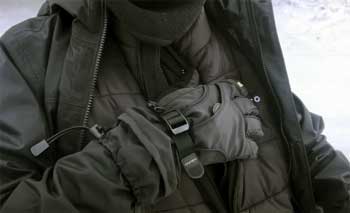
Your choice depends on your priorities. If you want maximum warmth and coverage, Venustas is the way to go.
Its five to six heating zones and dual-control options make it ideal for extreme cold or long outdoor sessions.
If you value simplicity, pocket warmth, and a stretchy fit, Ororo’s your match. It’s perfect for active pursuits or casual wear.
Budget-wise, both are comparable, but Ororo’s lower-end models are slightly cheaper. If you’re splurging, Venustas’ premium features (like the 3-in-1 design) justify the cost for serious outdoor enthusiasts.
After weeks of testing, I lean toward Venustas for its superior heating coverage and sleek design. It’s my go-to for long, frigid days. But Ororo’s pocket heating and stretchy fit make it a close second, especially for active or casual use.
You can’t go wrong with either—they’re both leaps ahead of traditional jackets.
Also Read: Is VolteX Heated Vest Worth It?
Frequently Asked Questions (FAQ)
Venustas and Ororo are top picks. Venustas excels in heating zones, while Ororo offers simplicity and pocket warmth. Choose based on your needs.
Ororo edges out Gobi with longer battery life (up to 10 hours vs. Gobi’s 7–8) and lighter designs. Gobi’s heavier materials suit rugged use.
Ororo’s Men’s Lightweight Heated Vest is a standout for its collar heating and flexibility. Venustas’ Women’s Heated Down Vest is great for warmth.
Venustas jackets last up to 9–10 hours on low, 6 hours on medium, and 3 hours on high, depending on conditions.
Conclusion: Stay Warm, Your Way
You don’t have to dread winter anymore. Whether you pick Venustas for its comprehensive warmth or Ororo for its cozy simplicity, you’re investing in comfort and freedom.
I’ve loved how these jackets let me enjoy the outdoors without freezing, and I’m confident you’ll find the perfect fit for your adventures.
So, grab a heated jacket, step outside, and make those chilly days your own.
